Table of Content
Honda started manufacturing six-cylinder motorcycles with the Honda RC165 in 1965, which received upgrades shortly after its introduction. The updated models include the Honda RC166 and RC174. In 1979, Honda manufactured the six-cylinder CBX 1000 model to beat the 1975 750 Sei with a six-cylinder engine made by an Italian company, Benelli.
Later, Honda produced the best six-cylinder motorcycles in the rider community. Six-cylinder motorcycles are heavyweight, large, and quite powerful. This article discusses all the six-cylinder motorcycles that Honda has produced.
1. Background of Six-Cylinder Honda Motorcycles
1.1. Honda M1 (Gold Wing Prototype)

In 1961, Honda started with a prototype six-cylinder M1 motorcycle to examine how useful it could be for touring. The Honda M1 was a speedy prototype equipped with a horizontally opposed six-cylinder, liquid-cooled engine.
2. Six-Cylinder Honda Motorcycles: Timeline and History
| No. | Year Introduced | Six-Cylinder Honda Motorcycles and Their Models |
|---|---|---|
| 1 | 1961 | Honda M1 (Gold Wing Prototype) |
| 2 | 1965 | RC165 |
| 3 | 1966 | RC166 |
| 4 | 1967 | RC174 |
| 5 | 1978 | Honda CBX 1000 |
| 6 | 1981 | Honda CBX 1000 Sports-Tourer model launched |
| 7 | 1988 | Honda Gold Wing GL1500 |
| 8 | 1993 | Honda Gold Wing GL1800 Mockups |
| 9 | 1997 | Honda Valkyrie |
| 10 | 1999 | Honda Valkyrie Interstate |
| 11 | 2001 | Honda Gold Wing GL1800 |
| 12 | 2003 | Honda Valkyrie Rune |
| 13 | 2007 | Honda EVO6 Concept |
| 14 | 2012 | Updates in Honda Gold Wing GL1800 |
| 15 | 2013 | Honda Gold Wing F6B “Bagger |
| 16 | 2014 | Honda Valkyrie F6C |
| 17 | 2018 | New Honda Gold Wing GL1800 |
3. Six-Cylinder Honda Motorcycles
3.1. Honda RC Series (RC165, RC166, RC174)
The Upgraded Honda RC166 from RC165

Before the 1960s, Grand Prix Racing was dominated by four-cylinder engine motorcycles. Honda decided to revolutionize racing motorcycles in the mid-1960s by introducing the Honda RC165 with a four-stroke, inline six-cylinder 249.42 cc engine. This model was upgraded to the RC166 in 1966.

The Honda RC166 was upgraded with amazing engineering with its 13-piece crankshaft and four-valve cylinders. With its seven-speed transmission, the Honda RC166 could reach a top speed of 155 mph.
1967 Honda RC174
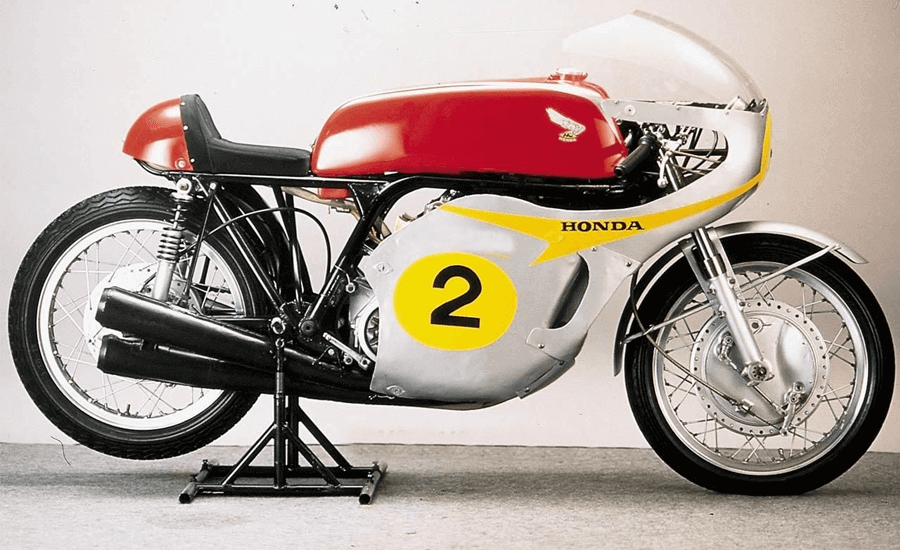
The Honda RC174 was another racing motorcycle introduced in 1967 and competed in the 350 cc class of the Grand Prix Racing. It was powered by a four-stroke, six-cylinder 297 cc engine with a seven-speed gearbox and could produce a horsepower of 60 hp at 18,000 rpm. This motorcycle could reach a top speed of 160 mph. In 1967, it won seven out of eight championship races, earning Honda the title of best constructor due to the RC174’s powerful performance.
Six-Cylinder 350 cc Honda RC174 in Action (Video Link)
3.2. Honda CBX 1000
1978 Honda CBX 1000
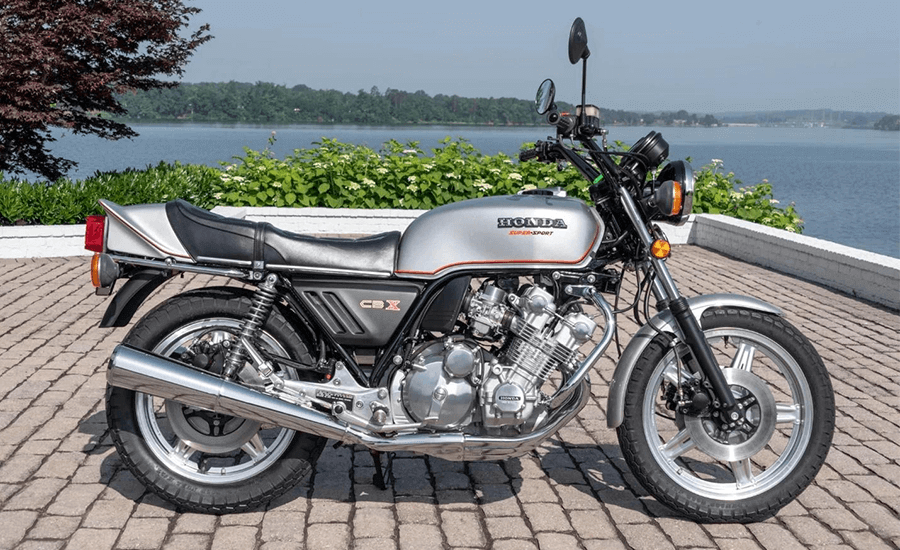
The Honda CBX 1000 is a sports motorcycle manufactured from 1978 to 1982. It became the flagship Honda model of the sports bike series during this time. This motorcycle was powered by an inline six-cylinder, an air-cooled 1047 cc engine with 24 valves, capable of horsepower of 105 hp at 9,000 rpm and a torque of 85 Nm at 8,000 rpm. With its five-speed gearbox, the Honda CBX 1000 could attain a top speed of 135 mph. The Honda CBX 1000 had a seat height of 32 inches, a wet weight of 272 kg, and average fuel consumption of 39.2 mpg.
The aspect of the six-cylinder Honda CBX 1000 that attracted most engineers was the sound it produced, comparable to the sound of a Formula 1 car. With a top speed of 135 mph, the Honda CBX 1000 was the fastest motorcycle in the world until the Suzuki Katana.
1981 Honda CBX 1000 Sport-Tourer

In 1981, a sport-tourer variant of the Honda CBX 1000 was introduced. It was fitted with modifications, including fairings with a large windscreen, an adjustable front fork, a rear mono shock, and saddlebags. The brakes were also upgraded with new dual discs and calipers towards the front.
Verdict
The Honda CBX 1000 was a powerful motorcycle best suited for straight roads. While the six-cylinder engine ensured a smooth ride with great sound, the Honda CBX 1000 was not fuel-efficient which resulted in poor sales.
The Powerful Six-Cylinder Honda CBX 1000 (Video Link)
3.3 Honda Gold Wing (GL1500 and GL1800)
1988 Honda Gold Wing GL1500

The fourth generation Honda Gold Wing GL1500 was introduced in 1987 after a series of various tests and prototypes. The engineers working on this project had to complete almost 60 stages while developing the six-cylinder Honda Gold Wing. This motorcycle was designed to have an enormous power output and provide a smooth, quiet ride.
The Honda Gold Wing GL1500SE was powered by a flat six-cylinder 1,520 cc engine that could produce a horsepower of 100 hp at 52,000 rpm and a torque of 150 Nm at 4,000 rpm. This motorcycle was so heavy that the engineers had to introduce an electric reverse gear with a manual five-speed transmission. The seat height could be adjusted between 29.1-30.3 inches, which was lower than all the previous Gold Wing models.
The 1988 Honda Gold Wing GL1500’s entire framework was made of plastic. This motorcycle received several upgrades, including a large windscreen, more electronics, a trunk, and saddlebags, resulting in a dry weight of 360 kg.
2001 Honda Gold Wing GL1800
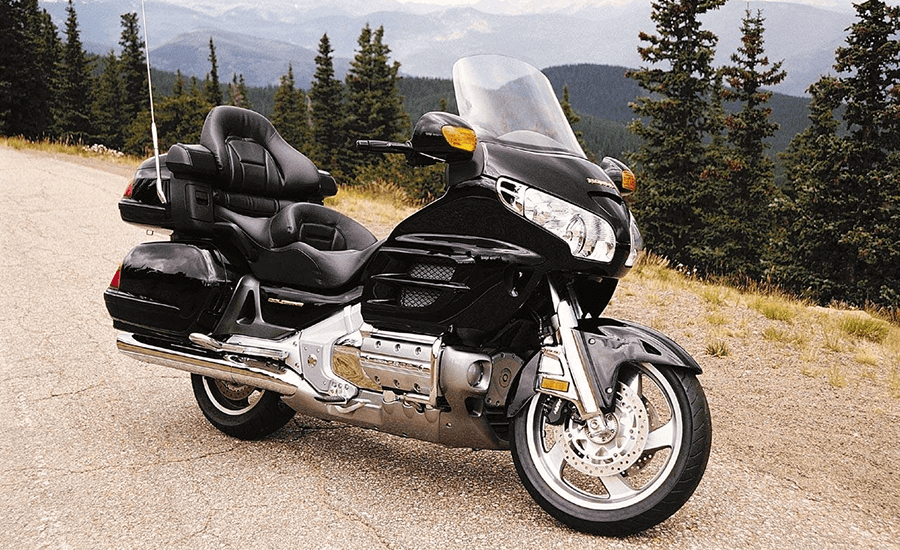
The fifth generation Honda Gold Wing GL1800 was introduced in 2001. It came with several upgrades, including a larger 1,832 cc, flat six-cylinder engine with a fuel-injection and ABS. This motorcycle could produce a horsepower of 118 hp and a torque of 167 Nm. Further modifications included saddle heating, heated grips, a GPS with speakers and headset attachment, and an airbag.
2012 Honda Gold Wing GL1800
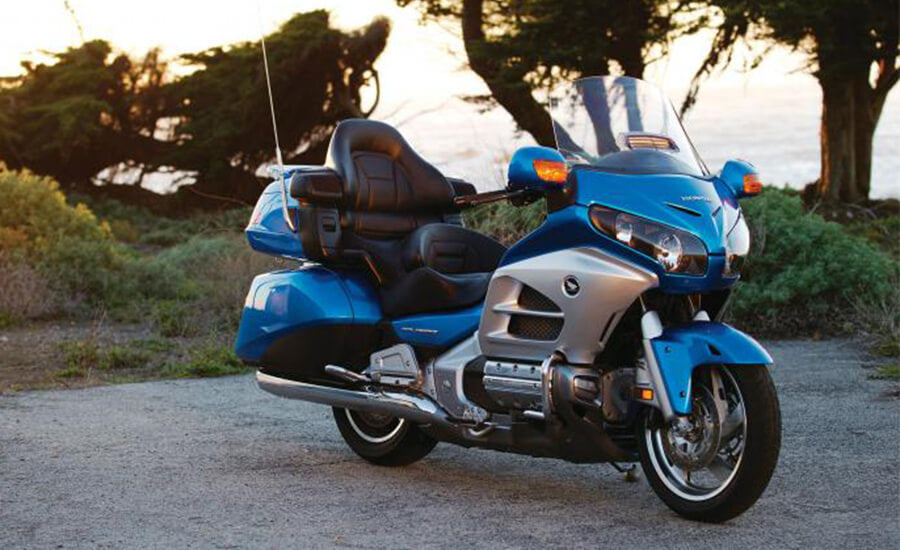
The production of the Honda Gold Wing GL1800 was transferred to and continued in Japan. There were minor upgrades made to this motorcycle, including an extended fairing to cover the rider’s legs and an updated audio system with I-Pod and MP3 connectivity.
2013 Honda Gold Wing F6B

In 2013, Honda made various changes to the Gold Wing’s style which resulted in the introduction of the Gold Wing F6B, which would also become known as the “Bagger.” The heavier parts fitted onto a standard Gold Wing were removed for the Gold Wing F6B, including the trunk and the passenger seat’s large backrest. The Gold Wing F6B’s large windshield was replaced with a smaller one. The stylistic changes were intended to attract riders who wanted a stylish Gold Wing model.
2018 Honda Gold Wing GL1800
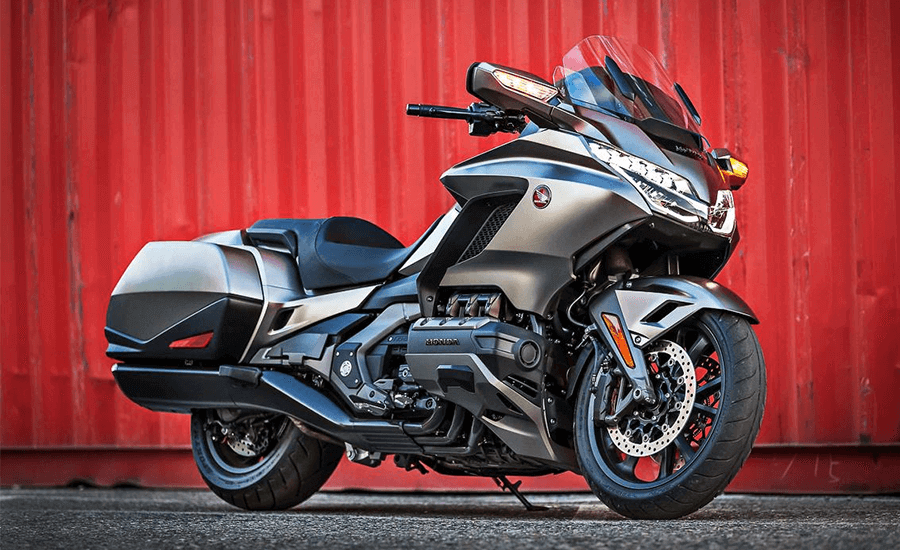
The sixth generation Honda Gold Wing GL1800 was completely redesigned, fitted with a new four-valve per cylinder engine, a sportier look, and a more compact design. The 2018 Honda Gold Wing GL1800 lost 41 kg thanks to its new frame. This motorcycle was equipped with the latest technology and safety features, including an ABS, traction control, four rider modes, and throttle-by-wire technology. This motorcycle is currently still in production and receives small upgrades every year.
The 2018 Six-Cylinder Honda Gold Wing Review (Video Link)
3.4. Honda Valkyrie
1997 Honda Valkyrie

The Honda Valkyrie, also known as the GL1500C in the U.S. market, was introduced in 1997. The early Honda Valkyrie models had a vintage cruiser look with their large windscreens, long skirt fenders, saddlebags, and passenger backrests. The 1997 Honda Valkyrie was fitted with a flat six-cylinder 1,520 cc engine with a liquid-cooling system, similar to the one on the Honda Gold Wing. The 1997 Valkyrie’s engine could produce a horsepower of 100 hp and a torque of 138.7 Nm. With its five-speed transmission, this motorcycle could reach a top speed of 131 mph. The seat height was set to 28.9 inches, ensuring comfortable riding ergonomics despite having a wet weight of 327 kg. This motorcycle was introduced in two variants, as a standard and tourer biker.
1999 Honda Valkyrie Interstate
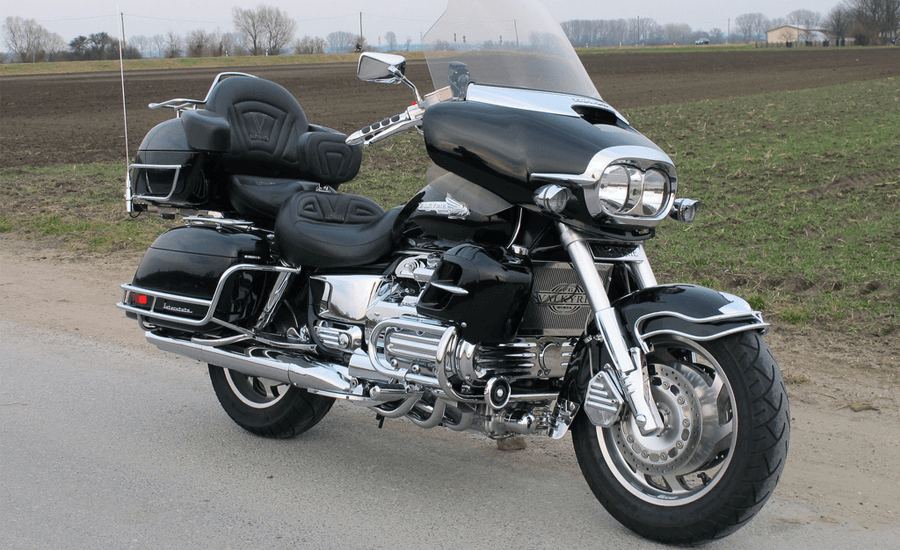
In 1999, Honda introduced the Valkyrie Interstate or the GL1500 CJ, a modified tourer version with its wider nose fairing, windscreen, and two headlights. The Valkyrie Interstate’s fuel tank size was increased and a trunk was installed towards the rear
2003 Honda Valkyrie Rune
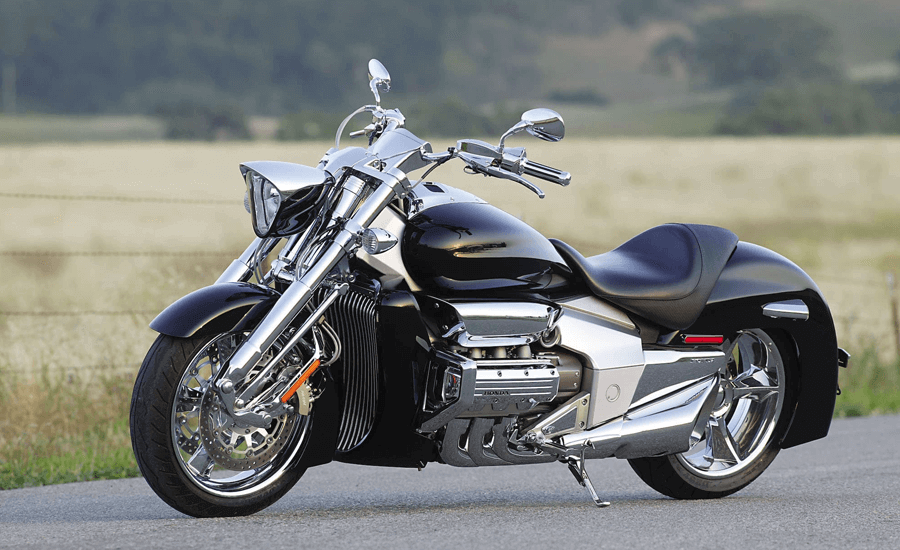
In 2003, Honda introduced the Valkyrie Rune, a vehicle powered by a 1,832 cc engine. The Valkyrie Rune received major stylistic upgrades and its bodywork was completely redesigned.
2014 Honda Valkyrie F6C

The 2014 Honda Valkyrie F6C (Flat-Six Custom) came with modern styling and advanced technology. This Valkyrie F6C model was fitted with a flat six-cylinder 1,832 cc engine capable of horsepower of 117 hp and a torque of 166.76 Nm. The windscreen, saddlebags, and fairings were removed from the six-cylinder Honda Valkyrie F6C. This motorcycle had a fully digital dash screen with multiple instruments. The Valkyrie F6C ABS variant was separately introduced.
The 2014 Six-Cylinder Honda Valkyrie Riding Experience (Video Link)
3.5. Honda EVO6 Concept
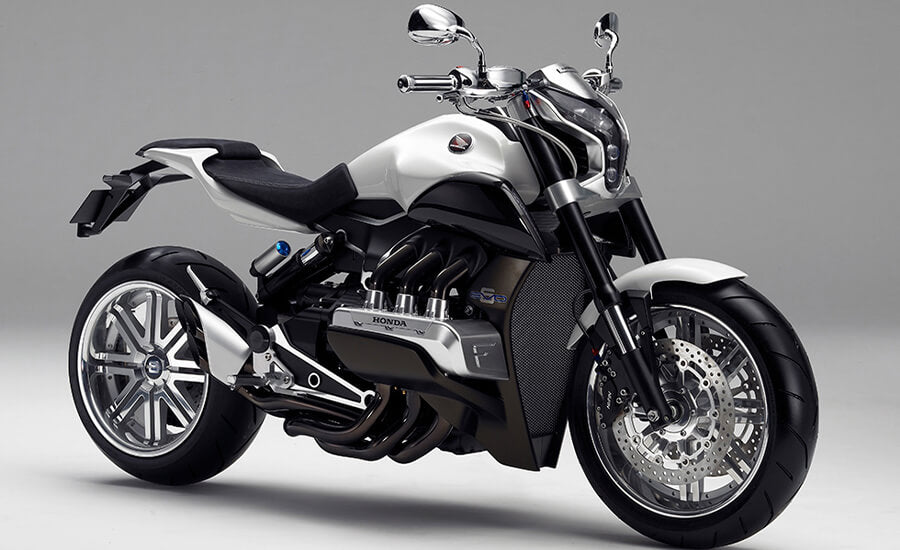
At the 2007 Tokyo Motor Show, Honda introduced the EVO6 Concept, equipped with the flat six-cylinder 1,832 cc engine from the Gold Wing. The Honda EVO6 is a naked motorcycle capable of more horsepower than its predecessors. The HFT (Human-Friendly Transmission) system installed in the EVO6 Concept allowed this motorcycle to operate in automatic or manual six-speed transmission mode. It is expected that Honda will soon launch a production version of the EVO6 Concept.
4. Pros and Cons of Six-Cylinder Motorcycles
4.1. Pros
- Six-cylinder motorcycles are more powerful than two- or four-cylinder engines
- Six-cylinder motorcycles offer more horsepower
- Six-cylinder motorcycles produce an aesthetically-pleasing sound
- Six-cylinder engines make the motorbikes look large and cool
4.2. Cons
- Six-cylinder motorcycles have high fuel consumption
- Six-cylinder engines have a complicated construction
- Six-cylinder engines are difficult to repair and maintain
- Six-cylinder engines are expensive to maintain
- Six-cylinder engines are less reliable
5. Takeaway
Six-cylinder Honda motorcycles are quite popular considering they have a separate fan base. They are huge, bulky, powerful, and produce a pleasing sound. Because they are heavy and require power from their engines, six-cylinder motorcycles have higher fuel consumption than two- or four-cylinder motorcycles. Still, some riders love to own and ride giant Honda motorcycles like the Honda Gold Wing or Honda Valkyrie.
These six-cylinder Honda motorcycles can be modified to be more stylish and ideal for touring by attaching aftermarket parts available at Viking Bags. With the installation of SADDLEBAGS and SISSY BAR BAGS, you can carry more LUGGAGE while going on tours. Other modification options include FAIRINGS, SISSY BARS, HANDLEBARS, and CRASH BARS .
























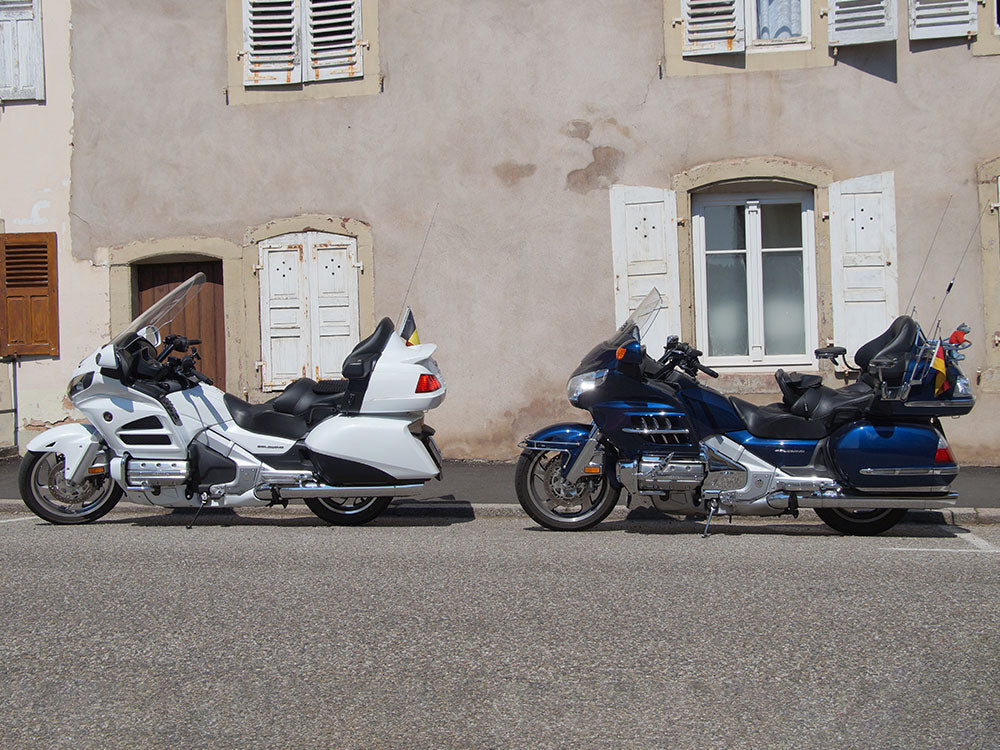
Leave a comment
All comments are moderated before being published.
This site is protected by hCaptcha and the hCaptcha Privacy Policy and Terms of Service apply.